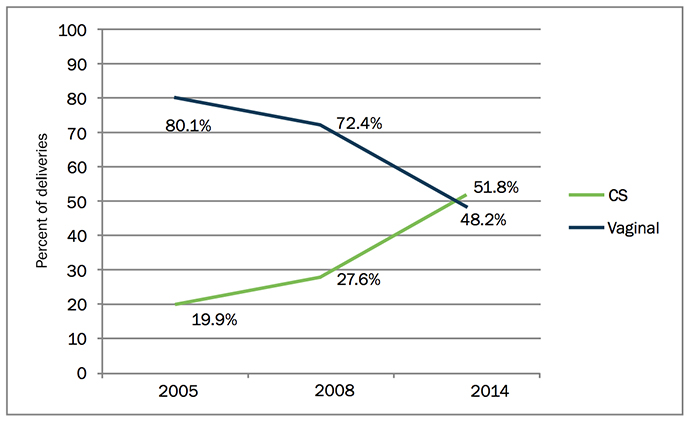In Egypt, there has been a sharp increase in the prevalence of cesarean section over the past decade. Data from the Egypt Demographic and Health Survey suggest that cesarean delivery may be overused or used for inappropriate indications.
Population Council Egypt explored trends, practices, and costs associated with cesarean section deliveries for women, their families, and the health system, as well as factors that may contribute to increased use of cesarean sections.

Participating physicians and key informants unanimously agree that cesarean section is over-used in Egypt. Perceived reasons underlying the increase are financial incentive, doctors’ desire to have better control over their time, doctors’ fear of medical litigation, vagueness of medical protocols, limited opportunities for junior doctors to practice vaginal deliveries, shortage of pain relief drugs in public hospitals, and shortage of anesthesiologists who are trained in administration of epidural anesthesia which could be used to relieve pain in vaginal deliveries.
Nahla Abdel-Tawab, Egypt Country Director, discusses the study in New/Lines Magazine: “What happened over the past 20 years is that a lot of women went from giving birth at home to giving birth in hospitals. That’s a good thing obviously, but personnel and resources didn’t rise to meet that need.”
